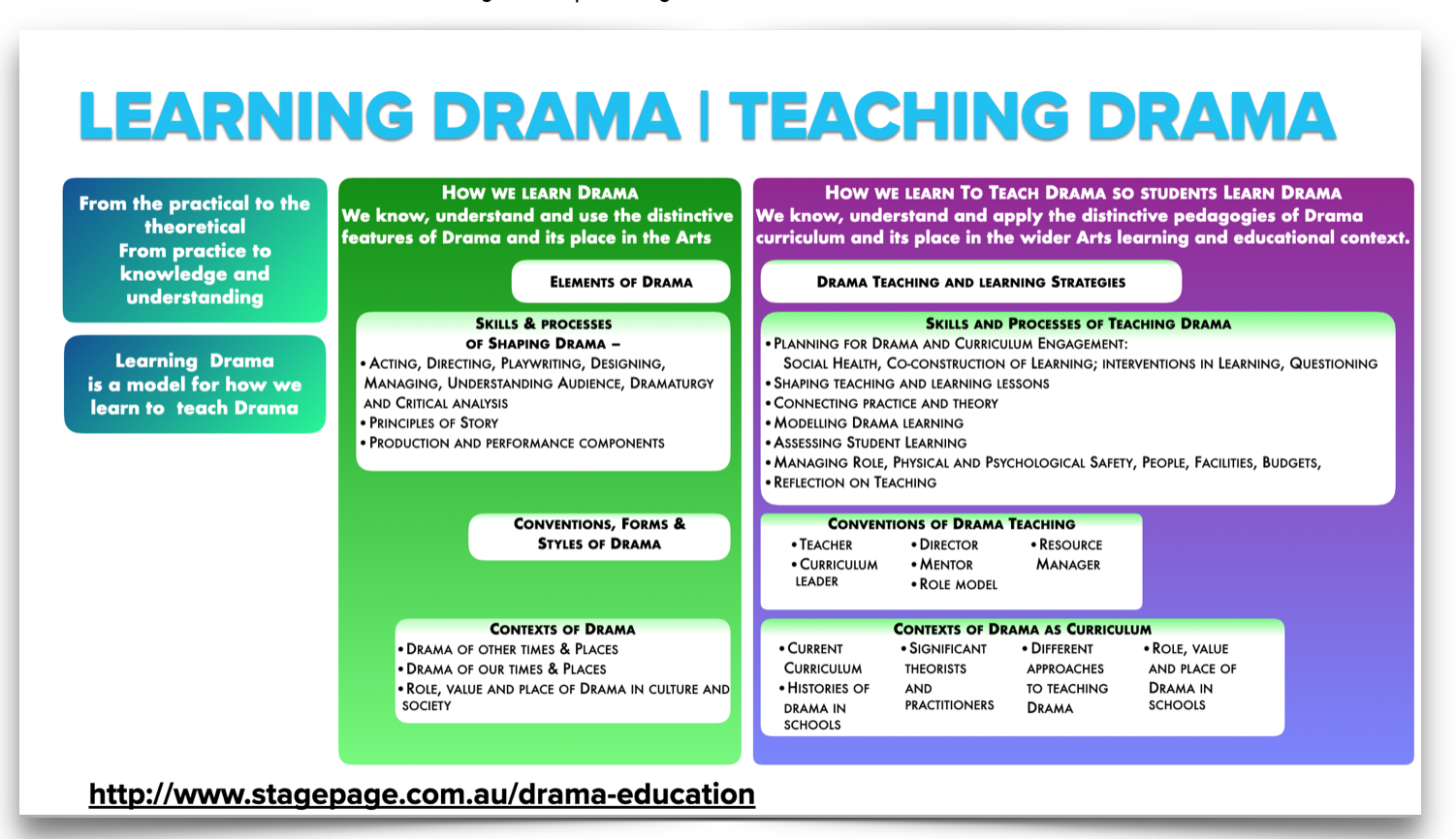Drama Tuesday - Belonging
/What does it mean to belong to a community – a guild – of drama teachers?
In setting up the drama teaching course at Murdoch University in 2002 I involved two metaphors
building a reporter of resources to support teaching drama on Day 1
enrolling students in a guild or association of drama educators.
It is useful to think about why I find the concept of belonging to a group of drama educators an important foundational concept.
It is not simply because as a graduating teacher i had impressed on me the importance of belonging. Though that is part of it. I have in professional life always been a joiner.
This post is reflecting on the role of belonging.
Teaching drama can be isolated. Unlike, say, teaching English, in many schools, as drama teacher you are on your own because there may be only one of you in a school.
There are many ways of belonging to a community even if you are a one person band.
You can establish networks and use buddy systems.
You can be a member of a community when you are not physically located together.
You can belong to a virtual community.
You can belong to a corresponding community exchanging emails and snail mail and telephone calls.
You can belong to a community by reading what others say and write and do by reading professional journals.
You can contribute to your professional community by writing of your experiences in professional journals yourself.
You can take responsibility for the future of the community. You can be a leader and a worker for the field. You do that from inside your drama workshop but also beyond. What you say and do with colleagues in your school, in your profession is a necessary part of contributing to the future of drama as a part of the curriculum for all students.
Belonging means that we don’t need to reinvent the wheel every time
Drama Victoria Facebook
One of the difficulties for productive and creative teachers is that they often reinvent their particular wheels. Rather than efficiently re-using and re-cycling their teaching notes and resources, they make new ones each year.
So, isn’t the issue: how do we better organise our pool of resources so that we can effectively and efficiently access them when we need to? And adapt them as our thinking about teaching drama changes, develops and grows
Using available resources better
Similarly, there seems to be a rejection of commercially published materials and textbooks. While I have never been able to use one textbook and one textbook alone, I do draw from many sources in my own teaching. But the most useful resources are people - and that brings us back to why it is necessary to have a sense of belonging.














































